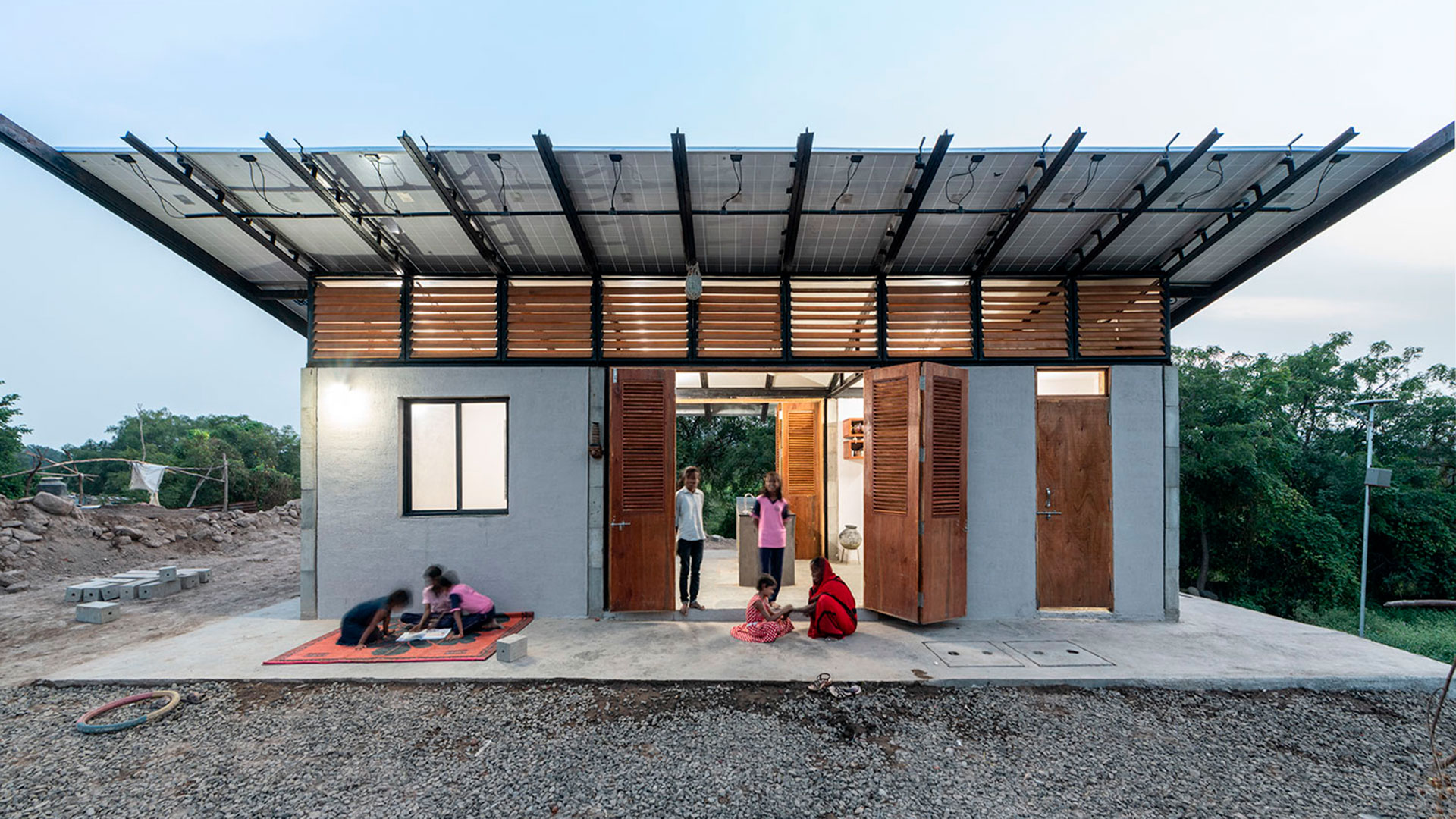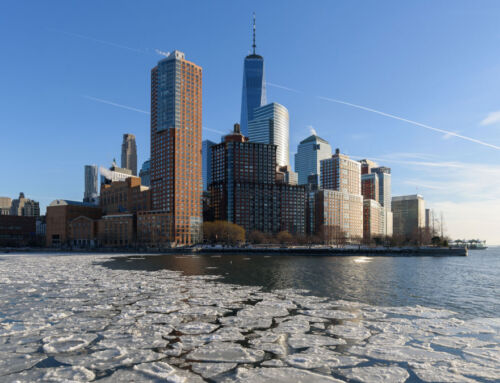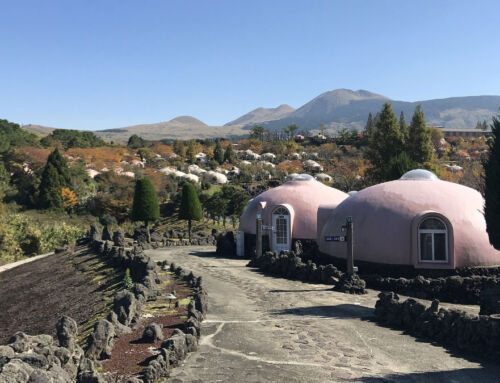A self-sufficient, CO2-negative house that generates income for its occupants – these are the premises on which the Singapore-based “climate technology company” BillionBricks presents the design and architecture of a house it has called PowerHYDE. It is an extraordinary project for many reasons. Beyond its energy performance, perhaps the most important is that it represents a viable solution to the housing needs of millions of low-income families around the world. Developed in collaboration with the Indian architectural firm Architecture Brio, the first prototypes of the PowerHYDE house have been built in India and the Philippines.
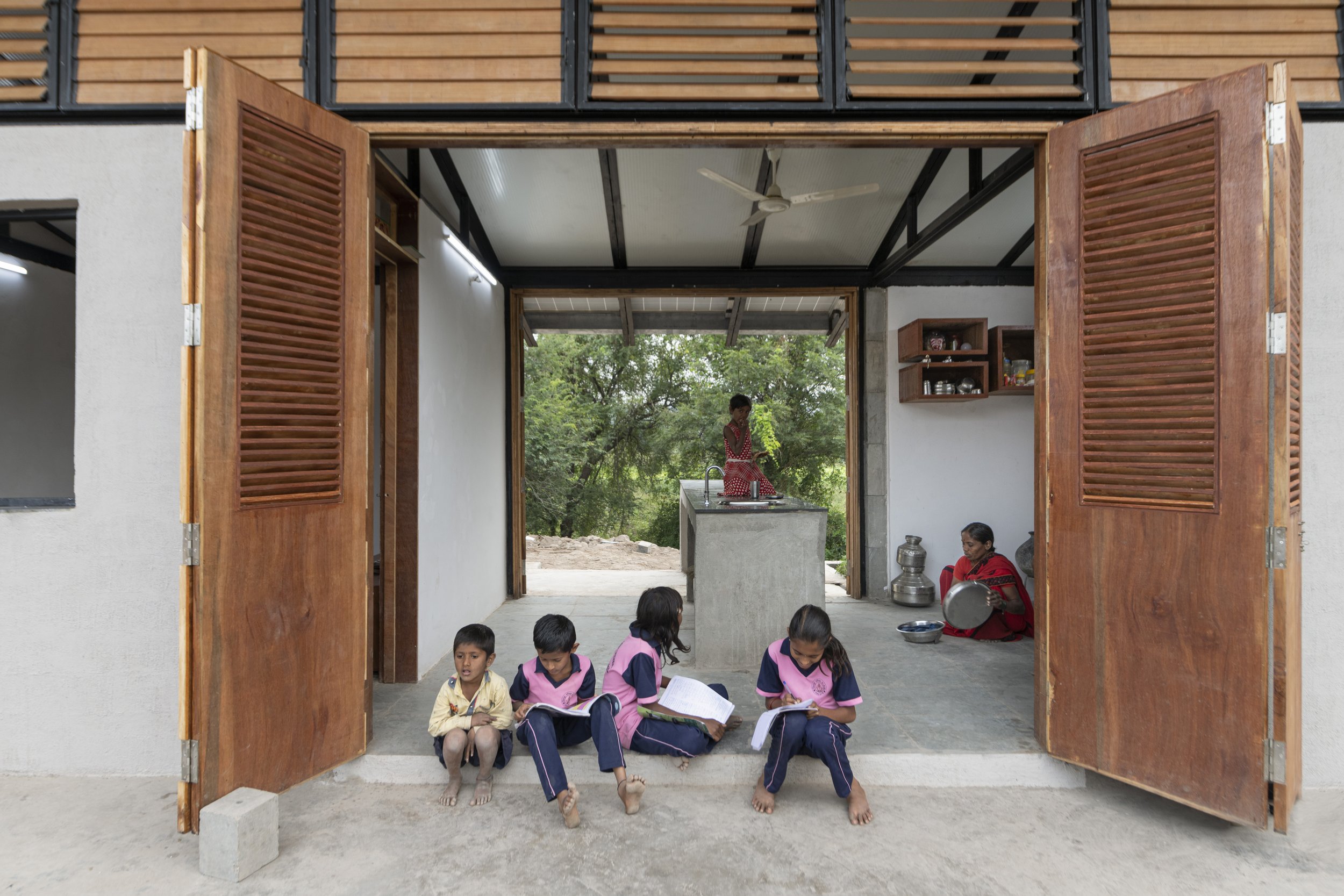
Let’s start with the roof: thanks to its solar panel roof, the BillionBricks house generates 4 times more energy than it consumes. This surplus is fed back into the grid for use by neighbouring communities and provides a source of income for the tenants living in the house. So, a group of 75 houses becomes a mini power plant generating 1 MW of energy. The solar roof, by extending beyond the house, shades the surrounding porches and therefore helps to cool the interiors at the same time. Its slope and large relative surface area serves as a rainwater harvesting system. In this way, the water is directed to an underground tank where it is stored for later use. In addition, wastewater is treated in septic tanks associated with each dwelling. Finally, small integrated vegetable gardens complement the production of seasonal vegetables for each family’s consumption.
In terms of its construction, the PowerHYDE house is built with a modular system combining 30% prefabricated elements and 70% local materials. Its design allows for in-situ construction by assembling a small set of parts, without the need for prior infrastructure, specialised equipment or heavy machinery. Furthermore, the structure of the house provides for vertical and/or horizontal expansion, so that it can meet the demands of growing families and/or communities.
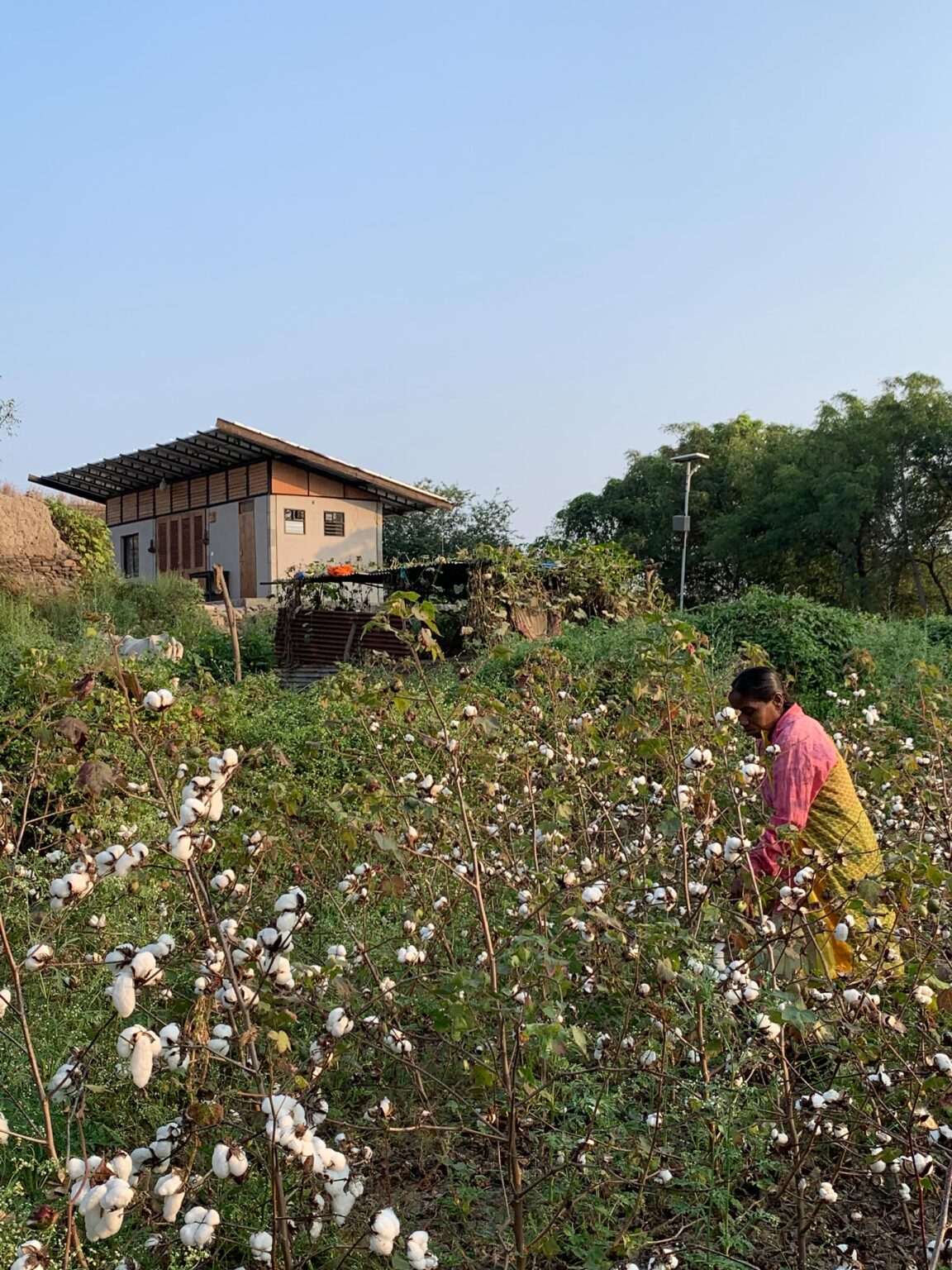
The model, “designed to serve the 200 million homeless people living in rural India“, can achieve carbon emission neutrality in 6 years, as shown in the graph below:
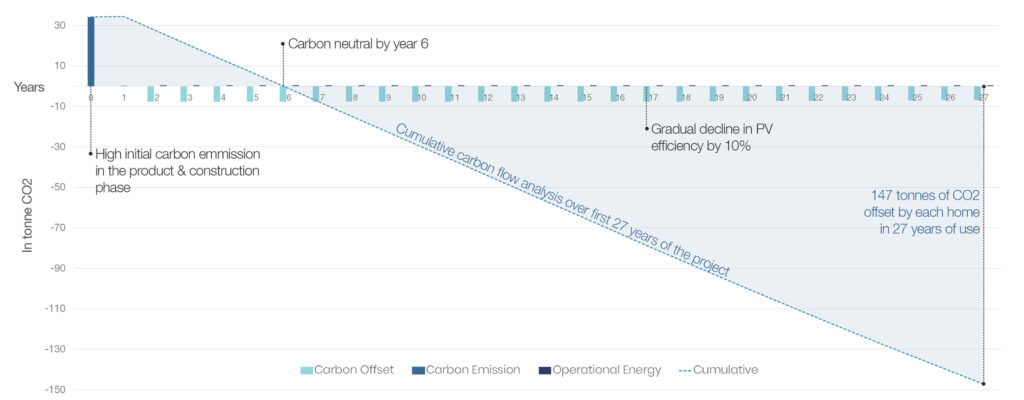
From the 6th and for the remainder of its estimated 60-year lifespan, the home becomes a carbon negative agent. All in all, BillionBricks states the goal of “delivering 100,000 net zero homes in this decade, impacting some 500,000 lives”.
Don’t miss the testimony of one of the first families to enjoy a PowerHYDE home, in this video:
Sources: BillionBricks, Architecture Brio.
Images: Architecture Brio, BillionBricks.


